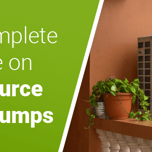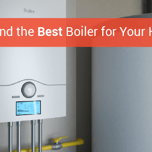Answer these simple questions and we will find you the BEST prices
Which type of solar quotes do you need?
It only takes 30 seconds
100% free with no obligation

Get up to 4 quotes from our selected suppliers by filling in only 1 form

Save money by comparing quotes and choosing the most competitive offer

Our service is 100% free and with no obligation
- GreenMatch
- Heating
- Central Heating Capacity
Central Heating Capacity
Calculating Your House’s Heating Capacity
No one wants to face a lack of heat or to throw money away on heating equipment that does not meet one’s household heating needs, especially during the peak of winter frosts. This is a small guide on how to calculate your house’s central heating capacity, so you will get the boiler or the heat pump that will match your preferences and needs, making the most out of the central heating device. This measure will help you make a more efficient use of energy, as other sustainability and green energy measures.
Things to Consider When Assessing Central Heating Capacity?
The heat capacity of the heating sources: boiler, heat pump, gas furnace, etc. It should, at a limited fuel (electricity, gas) consumption, ensure the minimum required supply of warmth during the coldest winter weeks.
The number and size of the heating distribution devices: the number of convectors and radiators (as well as the number of radiator sections), the area covered by the underfloor heating, etc.
The diameter of the pipes through which the central heating system’s coolant will be transported and distributed to the heating devices.
Central Heating Fuel Sources
In the context of current operating costs, natural gas might prove the least expensive option when it comes to central heating fuel sources, especially if one uses a condensing boiler, which is capable of converting almost 90% of the fuel it consumes into heating. Nonetheless, it is not a secret anymore that gas prices will go up in the near future, due to limited gas reserves around the world and because of the constantly growing demand for clean, natural gas.
After gas, coal and wood are to be considered optimal options when it comes to cost efficient heating sources. On top of being considered environmentally friendly, a wood pellet or biomass boiler will suit perfectly those households which use biomass as a heat source. The issue with solid fuel boilers is that they need constant service—the boiler has to be heated on a daily basis, preferably twice a day if you want to avoid any disruptions in the central heating supply. However, by installing a heat accumulator, one can reduce the amount of work required for operating a wood pellet boiler to the minimum. It usually comes as an integrated part of the latest biomass heating systems that are currently available on the market (depending on the manufacturer).
When it comes to electricity as a source to power one’s central heating system, the most reasonable way to do it (given that the main objective is to save on heating bills) is to use a heat pump. It can be an air to air, air to water, or a ground source heat pump. Their electrical and thermal inputs vary between 3 to 6 times, what makes a heat pump capable of delivering a 300% coefficient of performance at its best. Nevertheless, you should keep in mind that the efficiency of air to air and air to water heat pumps decreases with the decrease in outside temperature levels.

Measuring Heating Capacity
The first and the easiest method to calculate your home’s heating capacity is laid down in the ‘building code’ basics: one kilowatt of heat will be required for heating every 10 square metres of your home. Hence, for heating a 100 square meters home, one will need to look for a 10 kWh boiler type. However, employing this method will result in somewhat unreliable data, since:
So, how shall one calculate the heating capacity of his/her house more accurately and answer the question 'what size boiler do I need?'
As an example on how to determine the heating demand of one’s home, we will calculate the heating capacity of one floor (house) with the following dimensions: length:12 m, width: 6.5 m, height: 3.2 m, with 4 windows and 2 doors, located in the South of UK. The calculation is as follows:
- Floor’s area: 12*6.5=78 square metres
- Volume: 78*3.2=249.6 cubic metres
- The value of required thermal power: 249.6*40W=9984 watts
- Four windows will add another 400 watts, and two doors will add another 400. 9984+400+400=10,784 watts
- Since it is a house, we use a heating coefficient of 1.5: 10.784*1.5=16,176 watts
- Given that the house is located in the South, we apply a 0,8 weather coefficient: 16.176*0,8=12,940.8 watts
Thus, in order to ensure efficient heating for this house’s area (L-12 m, W-6,5 m) with the ceiling height of 3.2 m, one will need a boiler or a heat pump with a thermal output of around 13 kWh.
*This is a rough estimate, so the given numbers should not be taken for granted, A number of factors may influence the final results, like the house insulation, the materials the house is made of, the persistent micro-climate etc. Therefore, we would advise to discuss these details with the boiler/heat pump supplier, before acquiring a central heating device, and use a boiler size calculator.

Heating Devices
Using the same calculation methodology, one should determine the heating capacity of every room in the house. Based on the results, one can choose the most appropriate heating distribution device (i.e., radiator, convector, fan coil).
In order to find out how much heat a radiator can deliver, one should check some of the radiator’s technical parameters:
Most of the radiator and convector manufacturers point out the difference between the temperature of the room and that of the heating device to be around 70 degrees Celsius (C). This means that at a 20 degrees C room temperature, the radiator should reach around 90 degrees C. Nonetheless, the real values might differ from the manufacturer’s specifications.
Thus, if we consider the technical specs (the rough estimates) of different types of radiators with a standard 50 cm distance between the centre of the radiator and its hoses, we get the following numbers:
Get Quotes on Heating Devices!
If you have decided to purchase a boiler or a heat pump but you are not sure which type you would like, we are ready to help you. Fill out the form on this page with your personal preferences and information, and we will provide you with up to four different suppliers of boilers/heat pumps. You are free to choose the offer that best suits your needs. The service is free, without obligation, and takes only a few minutes.
Fill in the form in just 1 minute
We strive to connect our customers with the right product and supplier. Would you like to be part of GreenMatch?





